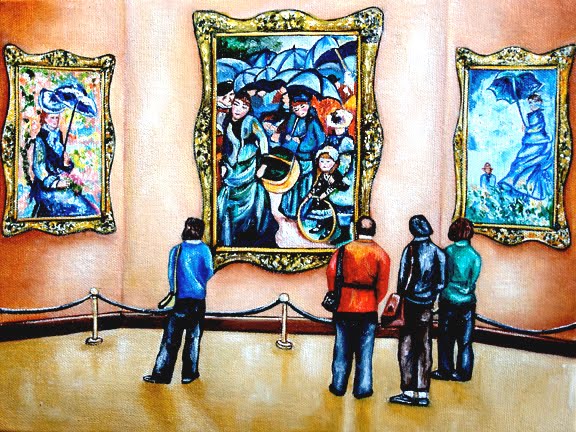 Last month Christ and Pop Culture ran an article by Jordan Monson entitled “Do Christians Have Poor Cultural Taste?” Monson begins by recounting a trip with Christian friends to see a movie and the subsequent conversation about it. He writes that while he was transfixed by the film and moved to reflect about Christ and “the full range of human emotion,” his friends had much different opinions.
Last month Christ and Pop Culture ran an article by Jordan Monson entitled “Do Christians Have Poor Cultural Taste?” Monson begins by recounting a trip with Christian friends to see a movie and the subsequent conversation about it. He writes that while he was transfixed by the film and moved to reflect about Christ and “the full range of human emotion,” his friends had much different opinions.
One of my friends thought it was too long for a movie not starring transforming robots. Another thought it was a poor film because the characters made decisions that we as Christians disagree with. He asserted it was wrong to enjoy the movie or learn from it because of these differences.
I was dumbfounded. Yet, I have since met quite a few Christians with this perspective. They believe a novel or film to be bad because the story does not fully align with their own moral, spiritual, or political presumptions. Their critique has nothing to do with the quality of the story, but with themselves.
I can empathize greatly with Monson. I don’t know how many times I’ve had to explain the qualities of a film or justify its mere existence to fellow Christians, in spite of its profanity or irreverent content. Conversely, I’ve many times played the role of wet blanket in a group that saw a PG-rated, ‘wholesome’ picture. Complaining about poor acting, wooden dialogue or amateur cinematography in a movie that’s “safe for the whole family” is usually a reliable way to keep evangelicals from asking you your opinion ever again.
Monson gives an interesting take as to why this is. Citing C.S. Lewis, he says that many Christians do not know how to receive art, they only know how to use it. Expressions of culture–whether through film, literature, television, or the fine arts–are typically seen as valuable only to the degree that they affirm Christian worldview or ethics. Those that don’t (which would be the vast majority) are labeled anathema.
To receive art, on the other hand, is to temporarily suspend judgment. We get ourselves out of the way and let the creator have the stage, possibly enlightening us or—God forbid—challenging us. Lewis’s thesis is that using art “merely facilitates, brightens, relieves, or palliates our life,” whereas receiving art adds to it.
I think Monson lands on something that is pretty obvious to anyone who has a passable knowledge of evangelical culture. Take as a case study the Harry Potter novels. Evangelicals in the US condemned the books for containing wizardy and witchcraft and accused J.K. Rowling of trying to recruit converts to paganism (despite her active membership in Anglicanism). On one level we can dismiss this as just another example of the know-nothing quality of so much American evangelicalism. But more significantly, I think this identifies the way the evangelicals relate to literature. Rather than seeing literature as narrative and entering the story, evangelicals tend to see all literature as prescription, either friendly to Christianity or counter to it. This is a failure of worldview, to be sure, but primarily it is a failure of imagination, a misunderstanding of what art and fiction really are.
If we accept this explanation, we have a coherent reason why Christians have difficulty not just experiencing art, but producing it. I was struck by this in reading Adam Bellow’s essay for National Review. Bellow comes at the topic a little more utilitarian than is desirable, and not everything he says about social conservatism and the arts applies to those working within a biblical worldview. Yet he confirms what many feel in an inarticulate way: Traditionalists have allowed their imaginative impulses to atrophy.
The evidence for this is pretty overwhelming. If you want to find traditional Christians on the big college campuses, your best bet is to head for the political science or business management departments. Where do you not want to go? Fine arts, English, film studies–those departments are and have been overwhelmingly secular and progressive. That’s not to say that Christians don’t exist in these areas, you’re just less likely to find them. To me, that bespeaks of a serious evangelical culture problem.
Evangelicalism’s atrophied imagination comes with meaningful consequences. For one thing, evangelicals and conservatives typically miss chances to support art that does inspire or exhibit some Christian reflection. To go back to the Harry Potter example: Christians who led campaigns against the book’s fictional witchcraft did not offer any word on Rowling’s glaringly redemptive themes. When Peter Jackson rolled out The Fellowship of the Ring and those evangelicals who had railed against Rowling ironically sang the praises of Tolkien, Christian intellectualism was made again to look silly and opportunistic.
When it comes to writing theology, philosophy, history or politics, evangelicals excel. When it comes to the arts and humanities, evangelicals tend to punt the ball leftward. This seems to be because evangelicalism has not yet decided what its attitude towards art is–or indeed, whether it should have one at all. We have still not given our answer to the question of “Christ and culture.” The remnants of fundamentalist separatism are shrinking, yet this doesn’t mean that we are any closer to a full-blooded theology of art.
The first step in repairing the atrophied evangelical imagination is clichéd but true: We have to admit we have a problem. As long as evangelicals focus exclusively on the didactic elements of Christian worldview, nothing will change. Evangelicals have to decide they desire to experience, produce and value art. This begins at the educational level and involves more meaningful evangelical writing on books, movies, music, fine art, theater, television, etc. The writers who want to speak on these topics should be given as much attention and Christian seriousness as those who write biblical theology or gender ethics.
Secondly, as Jordan Munson said, we have to get better taste. I’m not saying every Christian should be a book or film critic, or be able to talk about impressionism or the Tony Awards. But Christians need to know why Schindler’s List and The Road are excellent pieces of art. Hard truth: Some of this will require identifying bad art created by and for Christians. The upshot is that many of the films marketed most aggressively towards Christians are the least biblical in worldview. We have to be blunt about the fact that “Pan’s Labyrinth” understands the Gospel much better than “Evan Almighty.”
Lastly, evangelicals have to lower the stakes in the culture war. As long as evangelicals see expressions of culture merely as arrows in the Left’s quill, we won’t see the evangelical imagination recover. We need to wake up from the deception that just a few more blogs or a few more TV preachers and this generation’s moral tailspin will be averted. To see the beauty and good in art requires that we understand who we are as image-bearers and what that means to the human race. Producing good art, in other words, requires more acquaintance with the good than confrontation with the bad.











